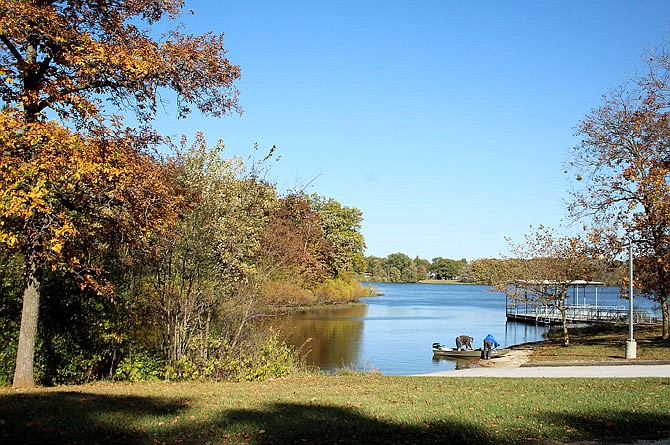Follow along as the Fulton Sun visits each location in the Great Callaway 200 Scavenger Hunt from the Kingdom of Callaway Historical Society.
Callawegians have until Nov. 13 to race to 20 historical locations across the county. From early settlement and Civil War battles to religious communities and commerce, these places represent two centuries of county history.
Today, the newspaper is featuring two of the locations highlighted in the scavenger hunt - Little Dixie Lake Conservation Area and Carrington Pits Recreation Area, both areas where visitors can enjoy nature.
By 1957, the Missouri Department of Conservation had acquired 467 acres near Millersburg and made plans to dam Owl Creek.
Little Dixie Lake, named for the Southern settlers from Kentucky, Tennessee and North Carolina in the area, was born.
The lake was one of Missouri's first community lakes and reduced flooding on Owl Creek, impacting nearby Millersburg.
Little Dixie is a popular picnic and fishing spot. At 733.4 acres, the area includes dozens of ponds for fisheries research conducted by MDC and the University of Missouri.
Carrington Pits Recreation Area is located near Davis Creek, just east of the community of Carrington. Online, the historical society has information about Carrington provided by Myrtle Niedergerke.
According to Niedergerke, Carrington City dates back to 1872. But the thriving village declined after a series of misfortunes during the 20th century - a tornado, the Great Depression and the end of the Chicago Alton Railroad.
At its peak, Carrington had a railroad, grocery and dry goods stores, a smithy, a drug store, a millinery store, a barbershop, a telephone service, a church and a school.
The economic center of community was the coal mine, which provided jobs. The mine was closed in the 1920s.
A tornado in 1927 destroyed much of the village. In 1932, the railroad ceased to function and the rails were taken up.
The abandoned Carrington coal mining pits now serve as a recreational area managed by the Mark Twain National Forest.
Today, visitors can enjoy pine trees, unusual to the area, planted by the Civilian Conservation Corps in the 1930s, picnic areas and fishing opportunities.
Learn more about the hunt at callawaymohistory.org/scavenger-hunt.

